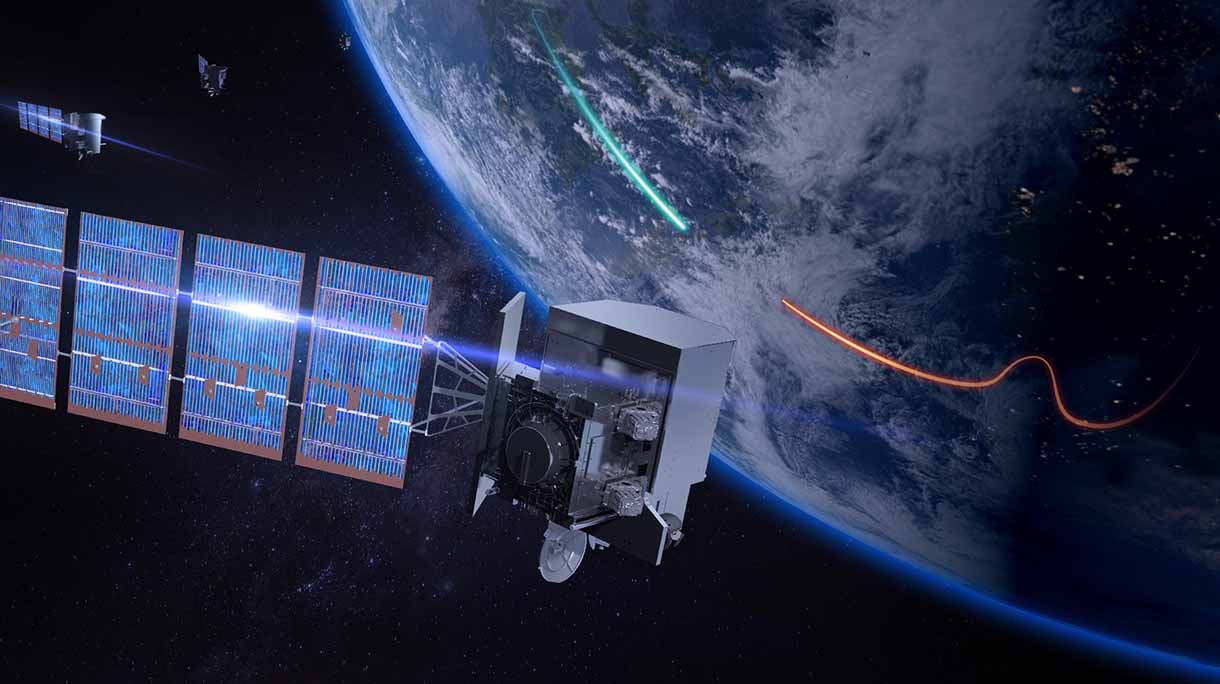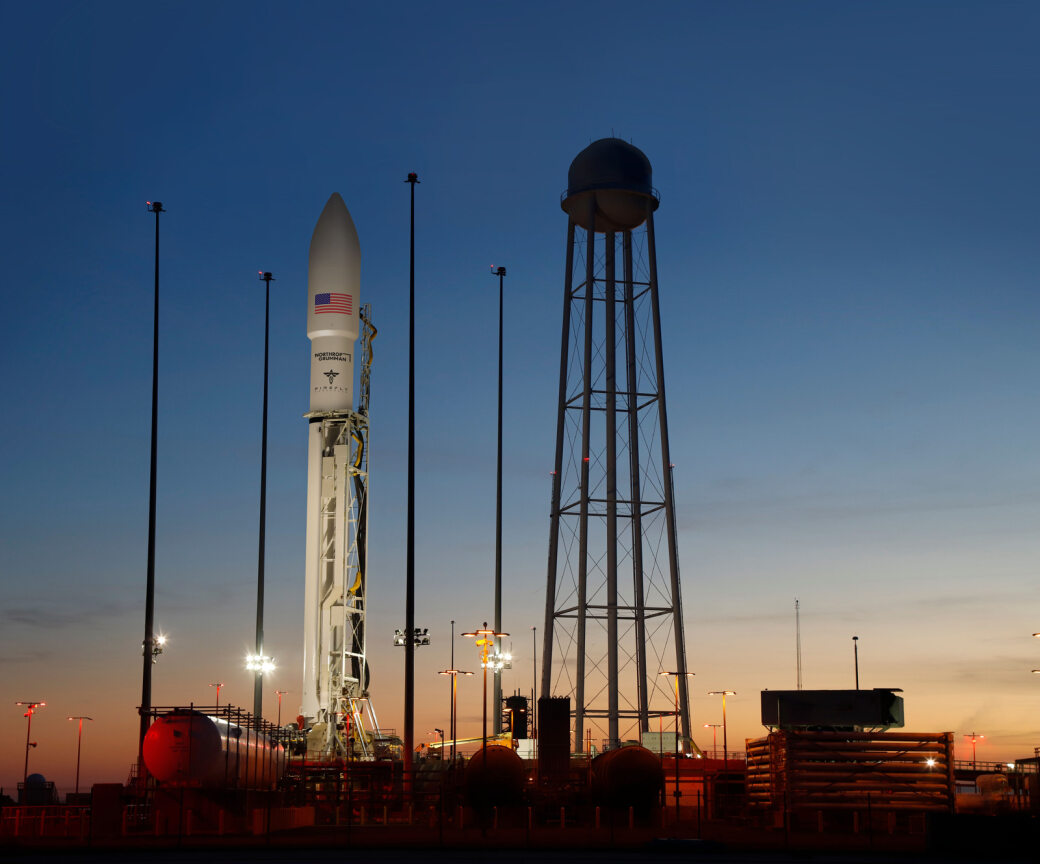
L3Harris has won two Space Development Agency contracts for development of missile warning/tracking satellites. (Graphic: L3Harris)
WASHINGTON — The Space Development Agency (SDA) has chosen three contractors to build its second set of 54 operational Tracking Layer satellites to support the Defense Department’s missile defense programs — six of which will carry sensors precise enough to convey targeting coordinates for interceptors, an SDA official said today.
SDA today announced awards worth approximately $2.5 billion in total to teams led by L3Harris Technologies, Lockheed Martin and Sierra Space to each deliver and operate 18 space vehicles as part of the Tranche 2 Tracking Layer constellation. Those birds are slated to be launched “no later than April 2027,” according to the SDA press release.
L3Harris’s award is worth up to $919 million; Lockheed Martin’s $890; and Sierra Space’s $740 million.
Speaking to reporters today, an SDA official explained that 48 of the latest iteration of Tracking Layer satellites will be optimized for missile warning/tracking of both ballistic and hypersonic missiles. SDA has dubbed the other six, two each from each of the winners, as “preliminary fire control” satellites with their design “inspired by” the earlier work of the Pentagon’s Missile Defense Agency (MDA), he said.
MDA’s Hypersonic and Ballistic Tracking Space Sensor (HBTSS) program “has crossed the proverbial valley of death. They have learned the appropriate lessons, advanced the technology and informed the requirements so we can move forward with fire control,” the SDA official said.
There has been some concern in Congress and among outside experts that SDA and MDA have not been coordinating as closely as they should on the development of fire-control capable infrared sensors, especially regarding those that will be needed in future by MDA’s new Glide Phase Interceptor.
Further, there is an ongoing debate about how best to configure the precision infrared cameras needed to gather images good enough for interceptors to base targeting coordinates on. Wide field-of-view cameras sweep large swathes of the skies for incoming missiles so they can cover more potential launches; whereas medium field-of-view cameras can cover less volume of space but can provide higher resolution images and better see dim hypersonic missiles.
The SDA official stressed that the six satellites in Tranche 2 of the Tracking Layer will include a mix of both types of cameras.
SDA also is planning to launch four medium-field-of-view satellites for fire control as part of the Tranche 1 Tracking Layer set of satellites, which are slated to fly in April 2025. Tranche 1 will include a total of 39 satellites, with the other 35 dedicated to missile warning/tracking.
Ultimately, SDA’s Tracking Layer will comprise just over 100 satellites, the agency official said. Each of those birds will have an expected lifetime of about five years, then be replaced by newer models under SDA’s spiral development model that envisions new tech introduced on-orbit every two years.
The Tracking Layer is part of SDA’s overarching Proliferated Warfighter Space Architecture (PWSA), that also will include a constellation of low latency, high speed data relay satellites dubbed the Transport Layer. The PWSA, in turn, is a key element of DoD’s Joint All Domain Command and Control (JADC2) concept for linking all military sensors to all shooters in near real-time. All told, the PWSA will include between 400 and 500 satellites on orbit at any one time, the SDA official said.












